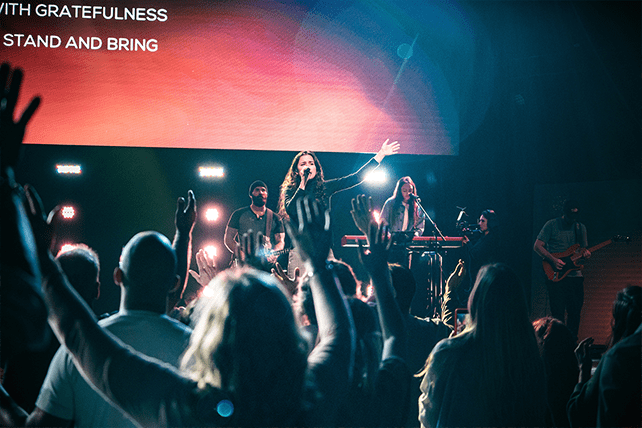About 90 of the churches had banned at least one song: most often songs from charismatic megachurches Bethel and Hillsong. One church banned any songs written by popular worship artist Chris Tomlin, while another banned the popular anthem “How Deep the Father’s Love for Us.”
Bishop also asked churches to list their favorite hymns, then compiled a list of the most popular contemporary songs. The top song was “Living Hope,” co-written by Phil Wickham, a well-known worship artist, followed by the modern hymn “In Christ Alone,” and then three older hymns: “It Is Well with My Soul,” “Amazing Grace” and “How Great Thou Art.”
The resilience of hymns can get overlooked if you just look at the top 20 charts of worship songs, said Bishop, which mostly feature new songs.
“Hymn singing is not dead,” he said. “At least among Southern Baptists.”
At Owingsville Baptist Church in Owingsville, Kentucky, services feature a mix of contemporary songs and older hymns, said Waynanne Caudill, who helps lead singing on Sundays.
Services usually start with a contemporary song, like “Living Hope,” and there’s often another contemporary song before the sermon. The pastor often picks those songs, said Caudill, hoping that newer songs will appeal to younger families in the congregation. Church members will also sing four or five hymns.
Despite being a small-town church — Owingsville has one stoplight and a Walmart, said Caudill — about half the church, which draws around 50 people, is made up of younger folks.
Caudill says she likes the mix of hymns and more modern songs — even though she’d prefer to sing songs by older Christian artists like the late Rich Mullins and the late Keith Green. She’s OK with more modern songs — but the Hillsong hit “Oceans” never sat right with her.
“The song says I’m going to walk on the water and most days I’m really not,” she said. “And that has weighed on me. You know, I want some more real stuff.”
Her favorite: “Oh, Lord, You’re Beautiful,” by Green.
Bishop’s survey is based on an influential 1938 study that helped shape Southern Baptist church music in the 20th century. Published in 1939, that study used survey techniques popularized by George Gallup to gather data from 1,093 local congregations.
That survey found most churches (83.7%) used a piano for services, while 18% had reed organs — also known as pump organs — and relatively few (4.8%) had pipe organs. One in 20 (4.8%) had no instruments at all.

